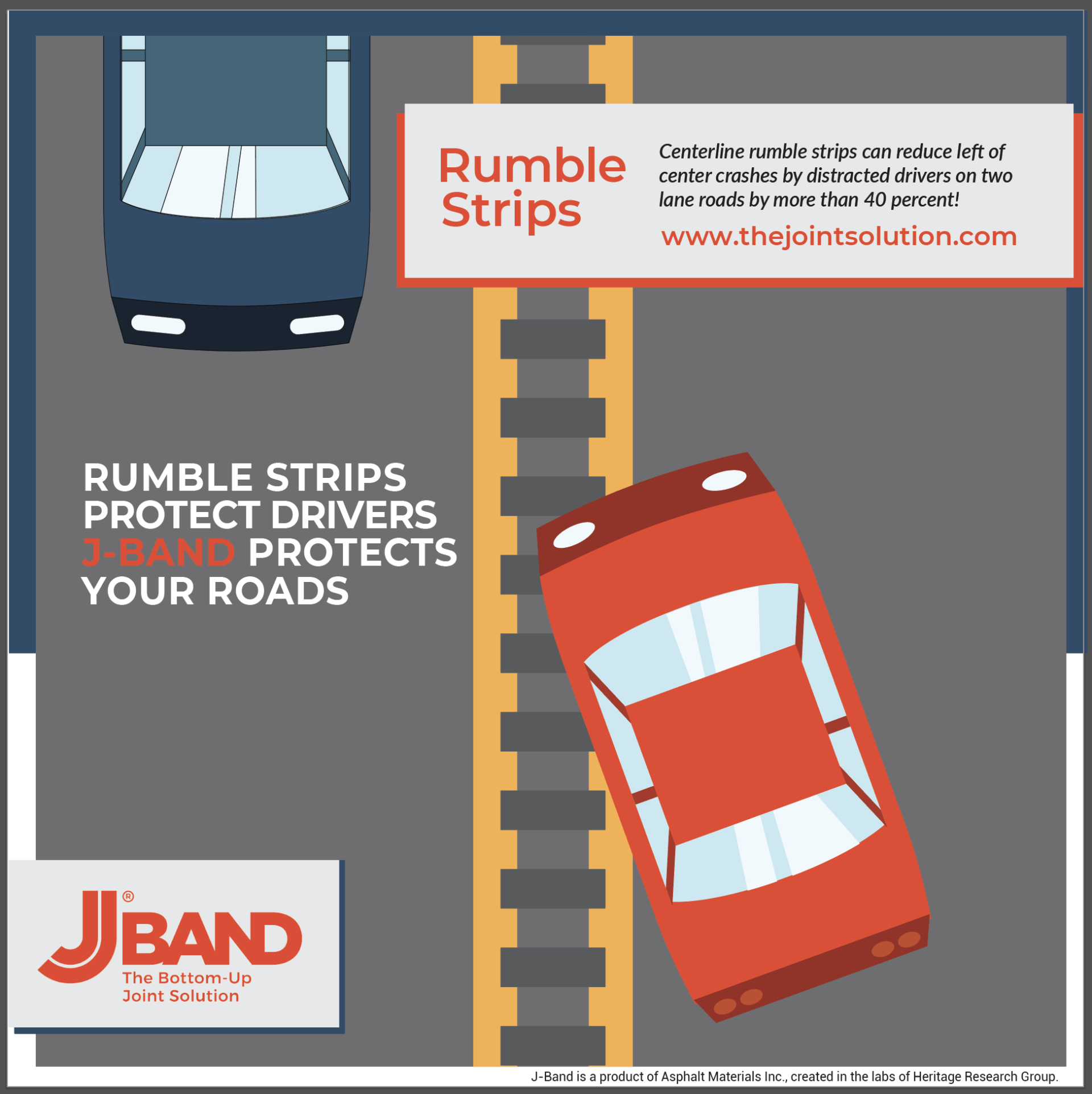Roadway safety is a growing concern in the United States. In 2019 alone, there were 36,096 traffic fatalities, an increase of 5.3% from the year before, according to a recent study conducted by the National Highway Safety Administration (NHTSA).1 Every year, thousands of Americans are injured or killed in preventable accidents, many of them due to distracted driving. Fortunately, the recently enacted Infrastructure Investment and Jobs Act (IIJA), includes several provisions that can make America’s roads safer.
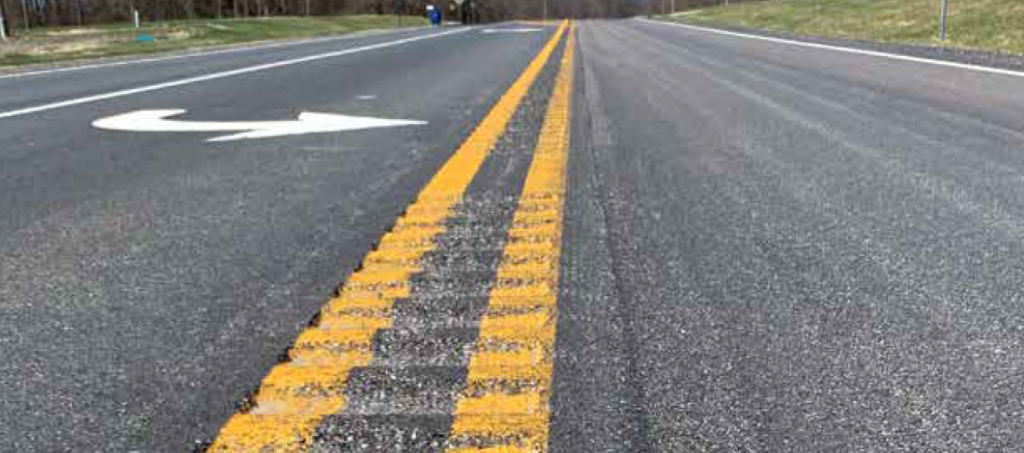
Safety is always a top priority for lawmakers. The IIJA is a federal law, signed by President Biden on November 15, 2021, and provides funding for infrastructure projects across the nation. Counties also play a major role in America’s transportation and infrastructure network, owning and operating 44% of public roads – more than any other level of government.1
The law includes a number of measures that can help improve road safety – one of the most important initiatives would be to increase the funding for rumble strips. Rumble strips are a low-cost measure used to address one of the most serious types of traffic crashes: a lane departure crash. Rumble strips are a set of transverse grooves applied on the shoulder or centerline of a roadway.
“The specific infrastructure investments needed will vary by place and community priorities. But overall, the evidence remains clear: By strategically investing in infrastructure, local leaders can make their communities safer, healthier, and more equitable.”
The Avenue 2
For example, the IIJA law recommends the installation of rumble strips on newly constructed highways. These strips help to alert drivers when they are crossing the centerline or veering off the road (edgeline rumble strips), potentially preventing accidents. The raised or recessed grooves of a rumble strip are cut into the pavement and act as a vibration cue to alert distracted drivers. They’re especially useful on rural highways, where they can provide a critical warning to drivers who may be fatigued. Rumble strips have been shown to be effective in reducing accidents, and they are a relatively low-cost way to improve safety on our roads.

How Can Local Communities Leverage IIJA to Effectively Promote Safety?
Safety is always a top priority, especially when it comes to our infrastructure. That’s why it’s so important for local leaders to have the evidence and resources they need to promote safety through the IIJA. Civil Rights Corps recently released a policy guide that provides a roadmap for explaining exactly how policymakers can leverage these funds to make holistic investments in safety. The guide covers topics like rumble strips, crosswalks, and speed limits, and provides details on how to effectively use infrastructure grants. To access the guide, visit this link to review funding sources and process recommendations.


But how? Grants from the IIJA provide an ideal funding source for local leaders to recognize and consider proven technologies that help create safer roads. There are many ways to promote safety with IIJA funds, but one very effective way is by installing rumble strips. Rumble strips have been shown to reduce accidents and safe lives.
Over 700 people die in work zone crashes annually.4 Rumble strips milled at center lines and edge lines are becoming more common as a proven strategy for improving driver safety. Rumble strips help reduce distracted driving accidents by keeping drivers alert and can reduce head-on collisions by up to 50%. 5
IIJA funds can be used to cover the cost of installating rumble strips, making a bold step as a way to improve safety. Leveraging the IIJA on proven safety strategies in our communities is a great opportunity to take advantage of these infrastructure dollars.

To assist in the decision-making process on rumble strips for road projects, view the Federal Highway Administration’s FHWA-SA-16-115, Decision Support Guide for the Installation of Shoulder and Center Line Rumble Strips. This guide describes methods for identifying appropriate locations for installation, assessing the potential crash reductions, a cost-benefit ratio, and developing performance metrics for safety.
CASE STUDY: Rumble Strips Are Creating Safer Roads in Darke County, Ohio
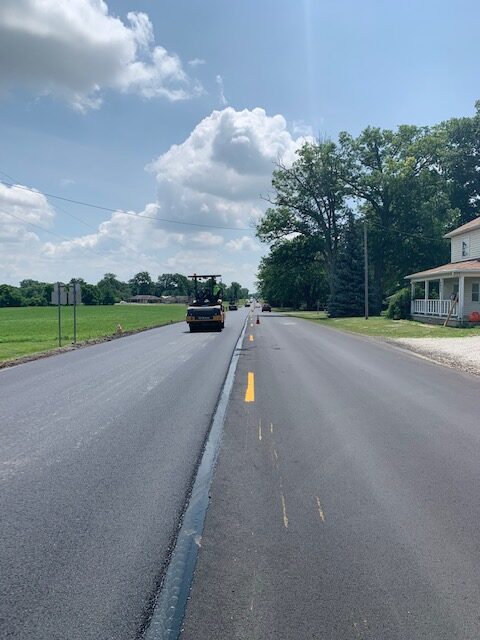
Greenville, Ohio is located in Darke County and serves as a great example of the success found with the use of rumble strips.
This is an important case study project because rumble strips are such an effective means of improving safety on our roads. However, road managers know that the centerline joint is already the first part of the pavement to fail. As a road’s most permeable part, this joint is susceptible to the elements. Air and water work down through this gap causing the joint to deteriorate, crack, and pothole. And when the longitudinal joint fails, the rest of the road soon follows—triggering the need for even more maintenance.
Therefore, while centerline rumble strips help save lives, they reduce the life and the overall performance of the road. Due to air and water infiltration, additional stresses can be introduced in this area of the pavement that is already susceptible. This is why, a sustainable solution like VRAM is vital to a roads’ longevity.
In Ohio, Bill OH HB51 is designed to require center-line rumble strips for certain highway projects and was introduced for Ohio’s 133rd General Assembly Session.
OH HB51 Bill Summary
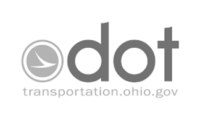
To enact section 5517.06 of the Revised Code to require the Ohio Department of Transportation to install rumble strips along the center line for all two-way, undivided state highways with a speed limit exceeding 45 miles per hour, as a part of specified highway projects.
As a centerline rumble strip is milled into the surface of the road, it will create s depression or carve-out in the pavement, where water may pool. And this is in the centerline area of the road that already has high permeability. This additional stress will likely accelerate the deterioration of the road and reduce the time before maintenance is required.
PERFORMANCE OF ROADS WITH RUMBLE STRIPS THAT USE VRAM
This project was the first known Ohio Department of Transportation (ODOT) project of its kind to do a comparison over time of the longitudinal joint performance of sections of road with rumble strips, versus sections without rumble strips.
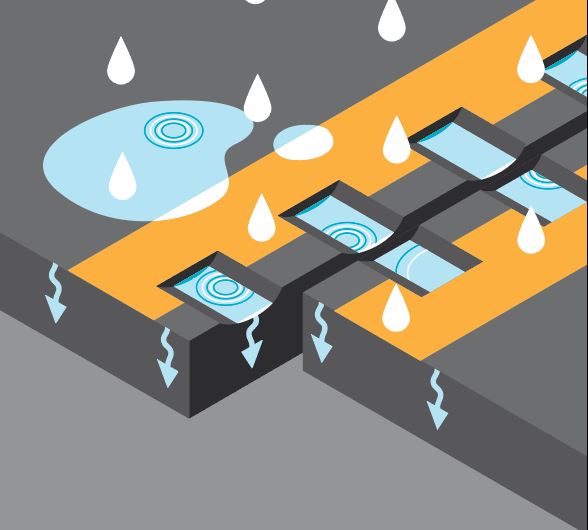
There were also sections of this project that utilized a Void Reducing Asphalt Membrane (VRAM), at the time of construction Therefore, this project compares test and control sections of the roadway with and without CRS and with and without VRAM.
This field case study found that rumble strips can be installed without compromising road life when VRAM is applied at the time of construction. VRAM is applied prior to the placement of hot mix asphalt (HMA), typically in a strip approximately 18″ in width. The heat of the HMA causes the VRAM material to migrate upward, filling voids and reducing permeability before the rumble strip is milled.
J-Band Saves Time, Money, & Lives
The VRAM material that was used in Darke County was J-Band. Your pavement represents a major investment and a major investment demands a proactive approach to solving major problems, like longitudinal joint deterioration.
J-Band is unlike other joint treatments, in that it is a materials approach. It significantly reduces air voids in longitudinal joints from the bottom up – literally. The material that fills the voids not only extends the life of the joint, but improves the performance of the entire pavement.
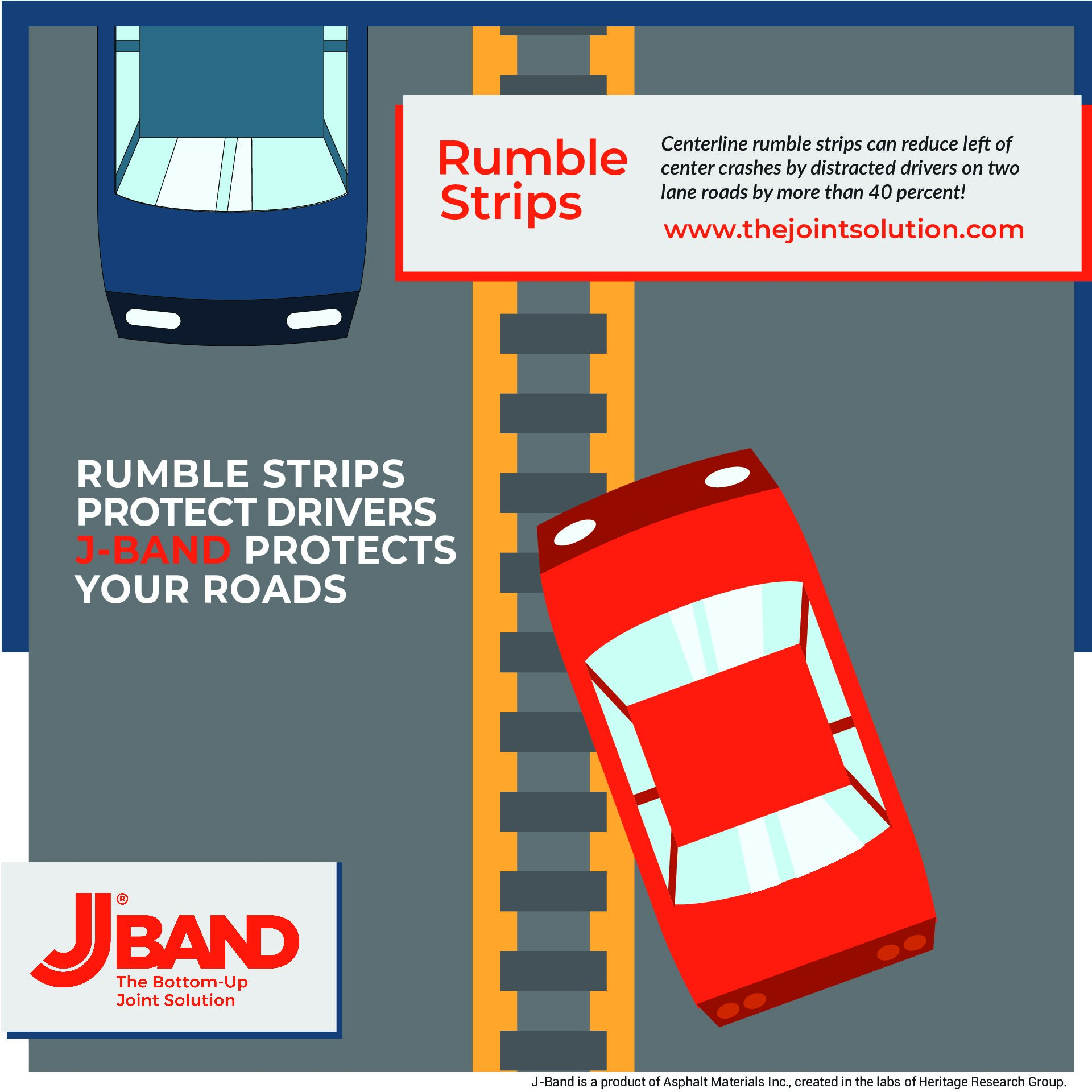
“If centerline or edge line rumble strips prevent crossover or run off the road crashes, then the preservation of health and life for motorists and all road users is immeasurable compared to cost to include them on pavements.”
Vince Venturella, J-Band Specialty Products Area Manager
Used since 2002 on roads in Illinois, J-Band has a proven track record of delivering longer road life and offers an impressive return on investment. Since 2002, J-Band has been used to save infrastructure funds in 21 states and the District of Columbia.
“LJS changes the joint area from being the first thing to become a problem, to being the last.”
Illinois Department of Transportation Engineer
Note, that VRAM (Void Reducing Asphalt Membrane) is commonly referred to in Illinois as LJS, or Longitudinal Joint Sealant.
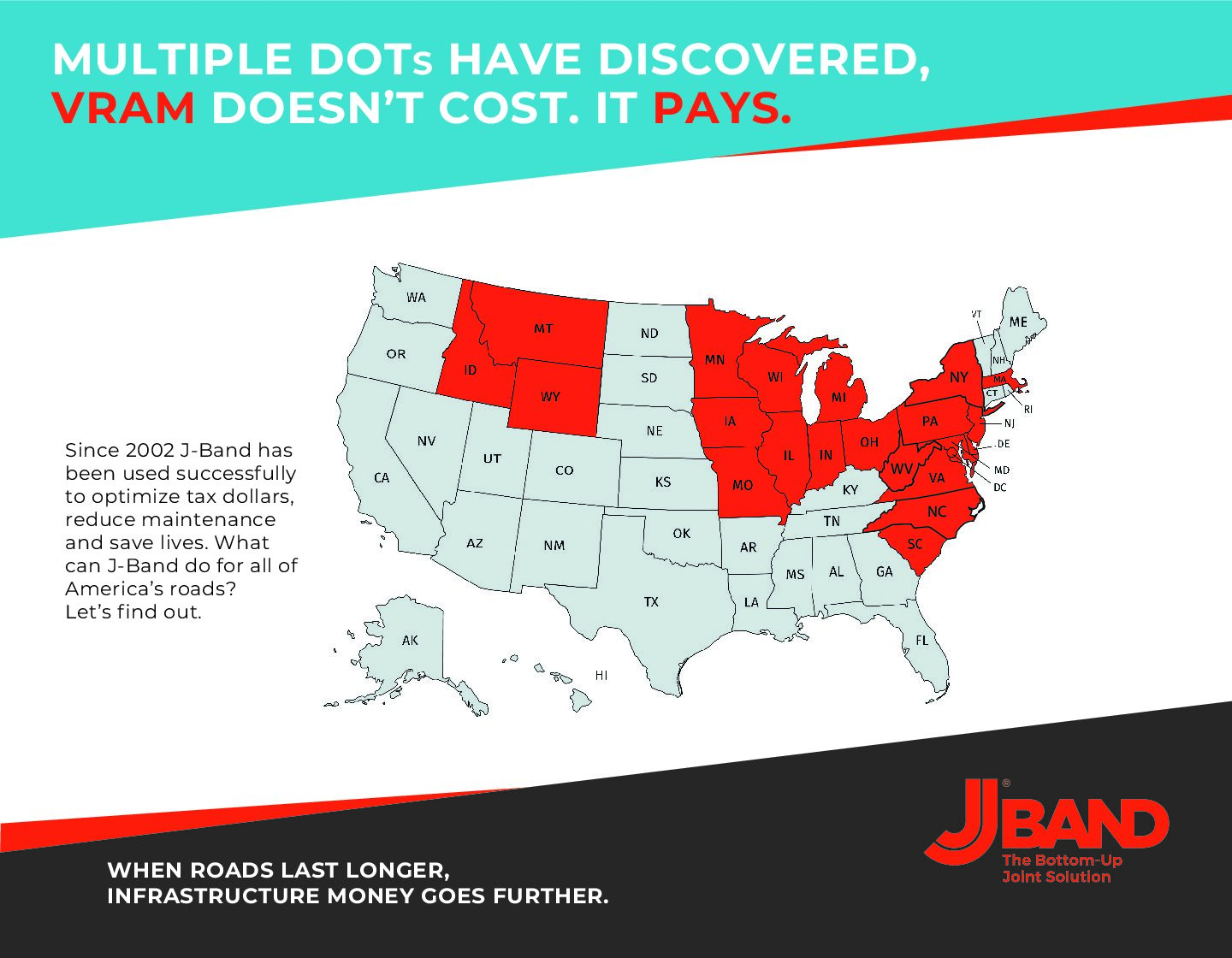
J-Band® is a product of Asphalt Materials, Inc. and was created in the labs of the Heritage Research Group. To learn more about J-Band, visit the website, www.thejointsolution.com
1 https://www.naco.org/resources/legislative-analysis-counties-bipartisan-infrastructure-law#link-1
2 https://www.brookings.edu/blog/the-avenue/2022/03/29/the-infrastructure-laws-untapped-potential-for-promoting-community-safety/
3 https://civilrightscorps.org/wp-content/uploads/2022/03/CRC_Harnessing-Infrastructure-Grants-for-Community-Safety-Report.pdf
4 National Workzone Safety Information Clearinghouse.
5 U.S. Department of Transportation Federal Highway Administration, FHWA Home / Safety / Roadway Departure / Center Line Rumble Strips (T 5040.40)

